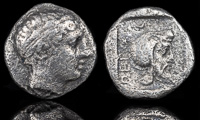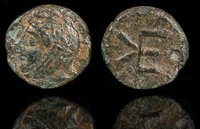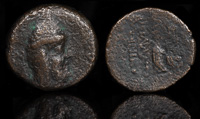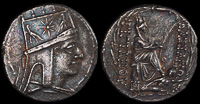Tiara
View All Tags
For the Persians, the tiara was an elaborate headpiece, usually worn by royalty and high-ranking officials, crafted from fabric, gold, or leather and adorned with decorations. The influence of Persian culture spread into the Greek and Roman worlds, particularly after the campaigns of Alexander the Great, whose conquest of Persia brought significant cultural exchanges. In this context, the tiara symbolized power, authority, and divine favor. As a result, the Greeks and Romans began to adopt it in some contexts, especially for ceremonial or imperial purposes.
In Greek culture, the tiara was less common but occasionally seen in depictions of Persian royalty or other eastern rulers. The tiara was a symbol of exoticism, wealth, and power, particularly in works of art that portrayed foreign dignitaries or conquerors. It was sometimes worn by Greek women as part of luxurious attire in high-status or ceremonial settings. While not as emblematic in everyday life, it appeared more frequently in representations of rulers or gods associated with foreign lands.
In Roman culture, the tiara became more associated with the emperors and their court. The tiara was especially worn by figures of authority as a mark of their imperial power, though it was not as widespread as other forms of crown or diadem. Emperors who sought to project an image of superiority and imperial sovereignty occasionally donned tiaras influenced by Eastern traditions, with the aim of associating themselves with the divine and monarchic lineage of Eastern rulers, such as the Persian kings.

Gongylos 450-400 BCE

Kebren, Troas 412-399 BCE

Mithradates I Kallinikos 96-70 BCE

Spithridates 334 BCE

Tigranes II 70-66 BCE

Tigranes II 80-68 BCE
